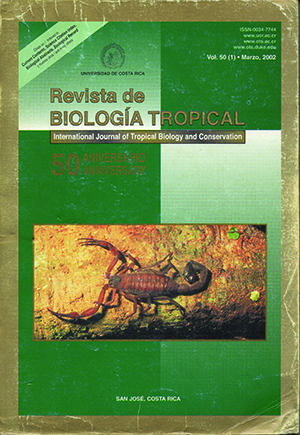Abstract
Distribution of Micropogonias furnieri in the Sepetiba Bay, an ecosystem highly important as rearing ground for this species that represents 5.8% of the numerical catches by otter trawling, was analyzed based in monthly and bi-monthly samplings from two programmes (beach seines = continental margin; and otter trawl = inside of the Bay), over three annual cycles, between 1993 and 1997. Spatial comparisons were assessed by dividing the Bay in two zones for the beach seines (inner and outer Bay) and three zones for the otter trawl (inner, central and outer Bay), following depth, salinity and transparency gradient, as well as for the influence of the sea. Beach seines (30 m extension, a 10 m length x 2.5 m of height x 7 mm mesh) and otter trawls were used. Trawls covered 1.5 km and the boat (net mouth 8 m, mesh size 12 mm between opposites knots in the cod). Temperature (oC) and salinity (p.s.u.) were taken in each sampling; depth (m) and transparency (m) were measured during the trawl. Fish from beach seine were basically young-of-the-year; in the trawl they were individuals of larger size with total length varying from 70 mm to 300 mm. Spatially, highest CPUEs were found for the continental margin in the inner Bay, and for the inside Bay, in the inner and central zones. Highly significant correlations were detected among M. furnieri abundance and low salinity, transparency and depth in the inner Bay, with no defined pattern for the continental margin. Temporally, differences in fish abundance were shown only for the second annual cycle (1996) for the continental margin, with peaks in September/October.Comments

This work is licensed under a Creative Commons Attribution 4.0 International License.
Copyright (c) 2002 Revista de Biología Tropical
Downloads
Download data is not yet available.


